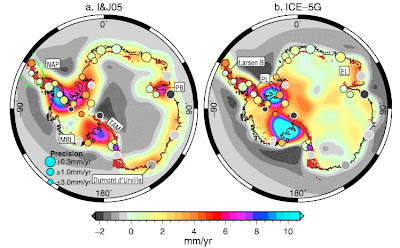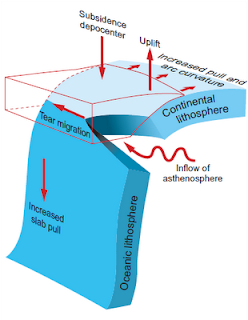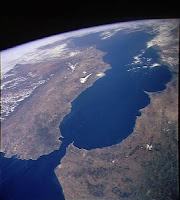Hace un par de años tuve la oportunidad de unirme a una visita geológica en los Cárpatos y pude ver y tocar los volcanes de lodo de Berca (Rumanía), acompañado de expertos locales. Hoy he encontrado este documental, es algo casero pero es bastante preciso y en español:
Por cierto, los volcanes de lodo siempre me recuerdan a esta sección vertical obtenida a partir de sísmica de reflexión: un corte del subsuelo del Mar de Alborán (Mediterráneo occidental) donde se han descrito volcanes de lodo anteriores y coetáneos a la crisis de salinidad del Mesiniense como responsables de la imagen caótica que se obtiene bajo la discontinuidad erosiva Mesiniense (línea morada). Esta superficie erosiva es una de las principales evidencias de la exposición del fondo marino durante la Crisis (la del Mesiniense):
 |
| Perfil de prospección sísmica en el Mar de Alborán, mostrando presuntos volcanes de lodo a ~2.5 s (unos 2 km) de profundidad. |
¿Qué pudo generar esos volcanes? He leído que la actividad sísmica facilita su formación (por liquefacción del sedimento, creo), y a lo largo de la costa de la región hay sismitas bien documentadas, pero no hay evidencias de actividad importante de fallas. Algo para pensar...




